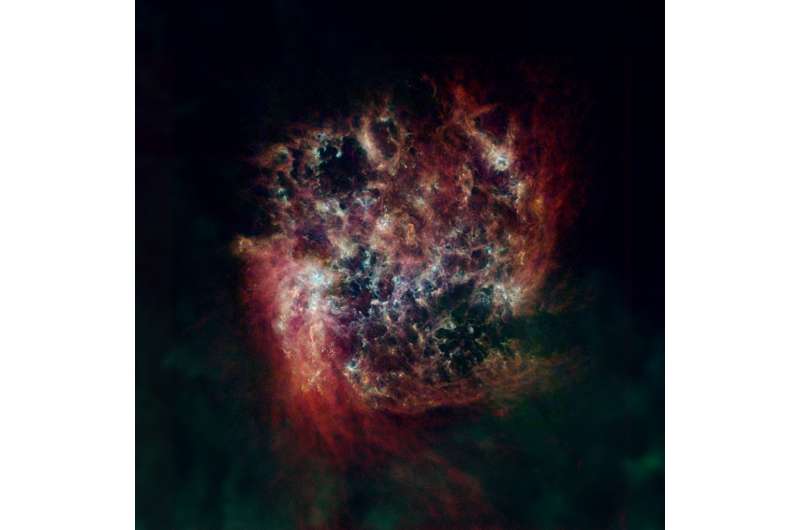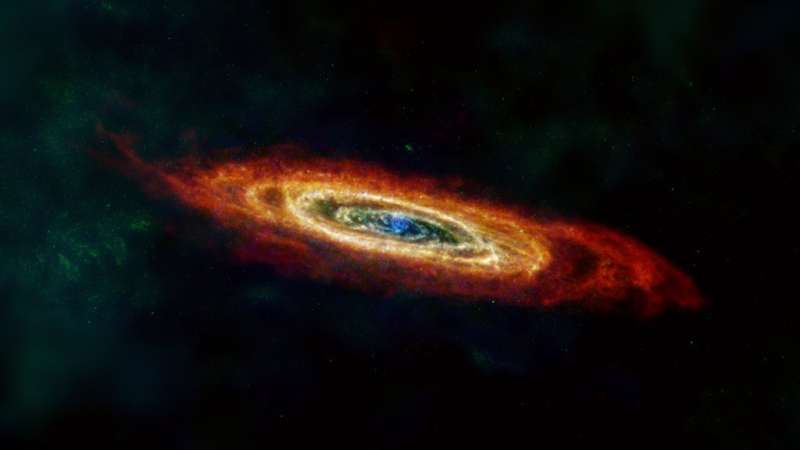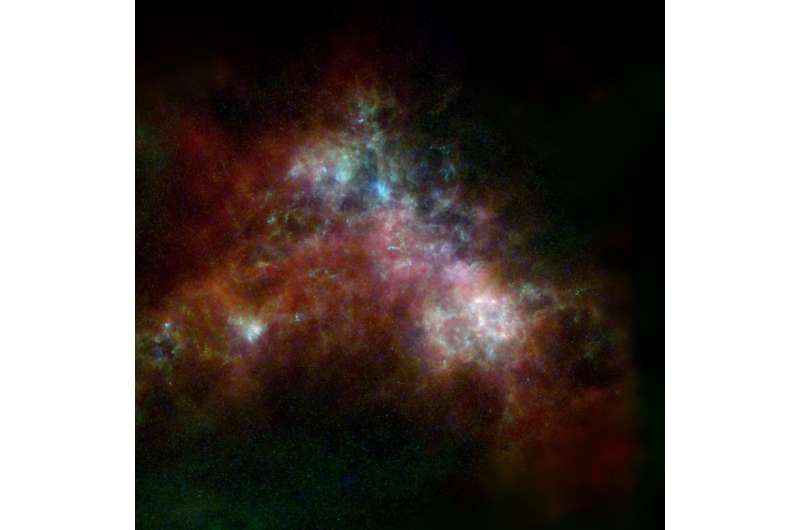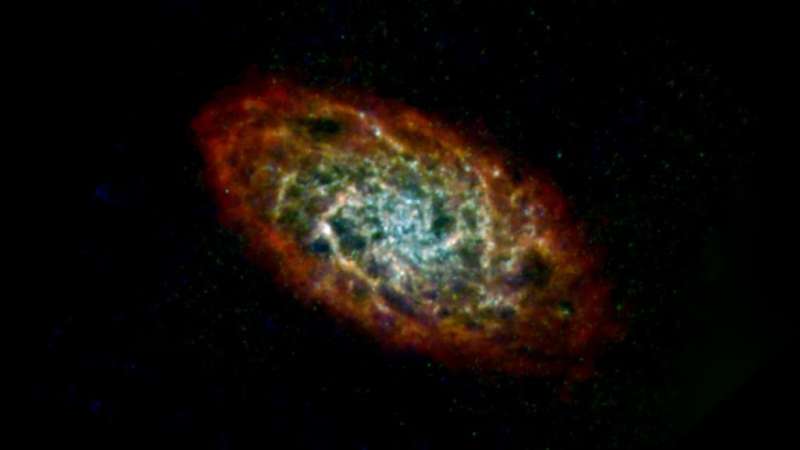New images using data from retired telescopes reveal hidden features in neighboring galaxies

New images using data from ESA (European Space Agency) and NASA missions showcase the gas and dust that fill the space between stars in four of the galaxies closest to our own Milky Way. More than striking, the snapshots are also a scientific trove, lending insight into how dramatically the density of dust clouds can vary within a galaxy.
With a consistency similar to smoke, dust is created by dying stars and is one of the materials that forms new stars. The dust clouds observed by space telescopes are constantly shaped and molded by exploding stars, stellar winds, and the effects of gravity. Almost half of all the starlight in the universe is absorbed by dust. Many of the heavy chemical elements essential to forming planets like Earth are locked up in dust grains in interstellar space. So understanding dust is an essential part of understanding our universe.
The new observations were made possible through the work of ESA’s Herschel Space Observatory, which operated from 2009 to 2013. NASA’s Jet Propulsion Laboratory in Southern California contributed key parts of two instruments on the spacecraft. Herschel’s supercold instruments were able to detect the thermal glow of dust, which is emitted as far-infrared light, a range of wavelengths longer than what human eyes can detect.

Herschel’s images of interstellar dust provide high-resolution views of fine details in these clouds, revealing intricate substructures. But the way the space telescope was designed meant that it often couldn’t detect light from more spread out and diffuse clouds, especially in the outer regions of galaxies, where the gas and dust become sparse and thus fainter.
For some nearby galaxies, that meant Herschel missed up to 30% of all the light given off by dust. With such a significant gap, astronomers struggled to use the Herschel data to understand how dust and gas behaved in these environments. To fill out the Herschel dust maps, the new images combine data from three other missions: ESA’s retired Planck observatory, along with two retired NASA missions, the Infrared Astronomical Satellite (IRAS) and Cosmic Background Explorer (COBE).
The images show the Andromeda galaxy, also known as M31; the Triangulum galaxy, or M33; and the Large and Small Magellanic Clouds—dwarf galaxies orbiting the Milky Way that do not have the spiral structure of the Andromeda and Triangulum galaxies. All four are within 3 million light-years of Earth.

In the images, red indicates hydrogen gas, the most common element in the universe. The image of the Large Magellanic Cloud shows a red tail coming off the bottom left of the galaxy that was likely created when it collided with the Small Magellanic Cloud about 100 million years ago. Bubbles of empty space indicate regions where stars have recently formed, because intense winds from the newborn stars blow away the surrounding dust and gas. The green light around the edges of those bubbles indicates the presence of cold dust that has piled up as a result of those winds. Warmer dust, shown in blue, indicates where stars are forming or other processes have heated the dust.
Many heavy elements in nature—including carbon, oxygen, and iron—can get stuck to dust grains, and the presence of different elements changes the way dust absorbs starlight. This, in turn, affects the view astronomers get of events like star formation.

In the densest dust clouds, almost all the heavy elements can get locked up in dust grains, which increases the dust-to-gas ratio. But in less dense regions, the destructive radiation from newborn stars or shockwaves from exploding stars will smash the dust grains and return some of those locked-up heavy elements back into the gas, changing the ratio once again. Scientists who study interstellar space and star formation want to better understand this ongoing cycle. The Herschel images show that the dust-to-gas ratio can vary within a single galaxy by up to a factor of 20, far more than previously estimated.
“These improved Herschel images show us that the dust ‘ecosystems’ in these galaxies are very dynamic,” said Christopher Clark, an astronomer at the Space Science Telescope Institute in Maryland, who led the work to create the new images.
Image: Hubble observes a not-so-close encounter
Citation:
New images using data from retired telescopes reveal hidden features in neighboring galaxies (2022, June 16)
retrieved 16 June 2022
from https://phys.org/news/2022-06-images-telescopes-reveal-hidden-features.html
This document is subject to copyright. Apart from any fair dealing for the purpose of private study or research, no
part may be reproduced without the written permission. The content is provided for information purposes only.
For all the latest Science News Click Here
For the latest news and updates, follow us on Google News.

